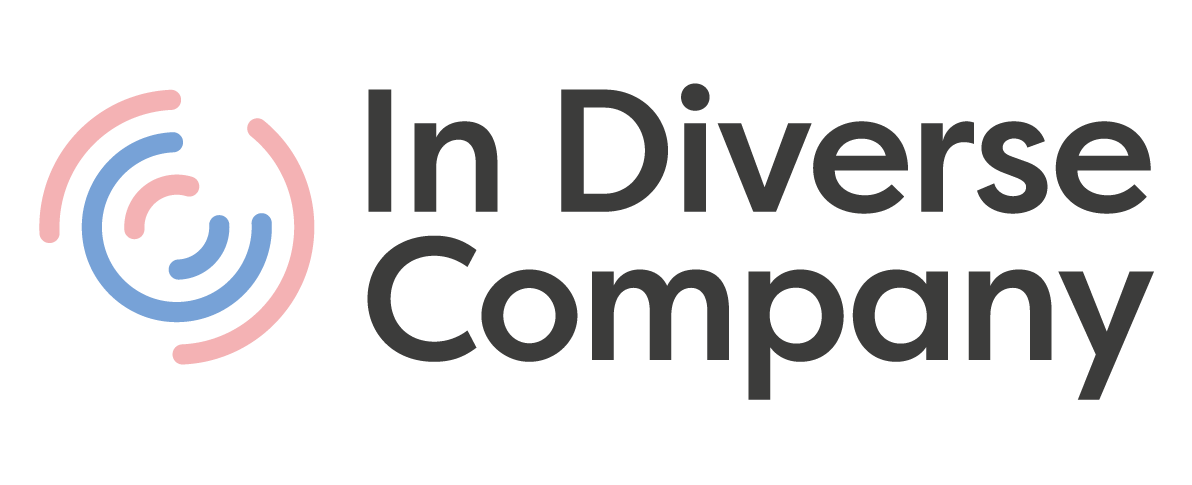By Caitlin Bethell and David Griffin
In today’s world, the quest to create an inclusive culture is a goal that seems to be just out of reach for many. However, if organisations and the people who work for them are constantly evolving and improving by trying to reach this goal it can only be a good thing.
Inclusion in the workplace means that every single person who works for that organisation feels:
- valued
- heard
- respected
- empowered
- a sense of belonging
Work environments can only become inclusive if one, the processes and policies allow for inclusion, and two, the people within the organisation, no matter who they are, demonstrate inclusive attitudes. Let’s focus on the latter part for now.
Attitudes
Attitudes are the beliefs, behaviours and emotions which we display through our actions, and can have a huge influence on how we behave.
Eagly and Chaiken (1998) suggested that attitudes can be structured by three components:
- Affective component: how the object, person, issue or event makes you feel e.g. “I am frightened of dogs, they scare me.”
- Behavioural component: how attitude influences your behaviour e.g. “When I see a dog, I might run away or hide.”
- Cognitive component: your thoughts and beliefs about the subject e.g. “I believe dogs are dangerous.”
This is also known as the ABC model of attitudes.
Our attitudes can be explicit or implicit. Explicit attitudes are those that we are consciously aware of and clearly influence our behaviours and beliefs. Our implicit attitudes will still affect our behaviours and beliefs but will be unconscious. These are our blind spots.
Attitudes are formed from our upbringing and personal experience from observing the people around us. These could be social roles and norms; how society expects you to behave. Nearly all organisations will have company values and behaviours that they will expect their employees to follow. People are more likely to work for organisations that match their personal values, which means that they don’t have to change their attitudes too much. However, there may need to be small shifts from time to time to meet organisational needs. If the organisational values don’t match an individual’s personal values, it could have an adverse effect. For example, people may get frustrated, experience stress and burnout, or become disillusioned or disengaged.
Attitudes are not set in stone, and they can change. There are a few attitude change theories that can be effective:
- Learning theory of attitude change: people observe others behaving in an inclusive way and being positively reinforced, so behave in the same way. Emphasis on desirable attitudes can also be strengthened for people then to behave in that way. For e.g., you see a person playing with a dog and they are having fun, they are playing catch and stroking the dog. If the person is laughing and smiling, you will assume they are happy. You may want to feel like that, so your attitude towards dogs begins to change.
- Elaboration likelihood theory of attitude change: this theory of persuasion suggests that people can alter their attitudes in two ways. First, they can be motivated to listen and think about the message, which leads to an attitude shift. Or they might be influenced by the characteristics of others demonstrating the attitude, leading to a temporary or surface shift in attitude. Messages that are thought-provoking and that appeal to logic are more likely to lead to permanent changes in attitudes.
Therefore, if we are working for an organisation that wants a shift in being more inclusive, having the right people leading this will encourage people to behave more inclusively.
Here are a few small changes you can make starting today to help be more inclusive in your workplace:
Call others by their name: Ask people their name or how you pronounce it if you are having trouble. How included would you feel if people did not know your name or even try to say it correctly? It is not rude to ask someone how to pronounce their name or what someone prefers to be called.
Ask Questions: Be curious about other people’s culture, upbringing, or interests. This will show that you are interested in the other person as a human and not just someone that you are working with for eight hours. By having these conversations, you might find out things you didn’t know you had in common, and it can also help you find out things that make people unique.
Be kind: This may be an obvious one, but in my experience, most people and organisations that are kind first, seem to be the most inclusive. Show that you care about someone as a human being ask them how they are, ask how their families or pets are. It doesn’t take much to start this ball rolling.
_
This article is adapted from our programme “Developing Inclusive Attitude” which is available on our learning platform Include LXP. This five-part programme looks at what behaviours are needed to develop inclusive attitudes in your day-to-day working life. To find out more about how this and other programmes can be made available to employees in your organisation, please reach out to us at info@indiversecompany.com.
_
Photo by Canva
Liked this article? Share it with your network:
Work environments can only become inclusive if one, the processes and policies allow for inclusion, and two, the people within the organisation, no matter who they are, demonstrate inclusive attitudes.






